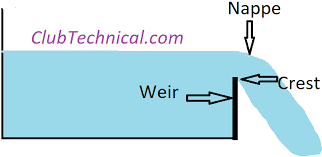THE BASICS OF REBAR: A COMPREHENSIVE GUIDE FOR BEGINNERS
THE BASICS OF REBAR: A COMPREHENSIVE GUIDE FOR
BEGINNERS
The Basics of Rebar
If you have ever wondered
what gives strength and stability to the concrete structures that we see around
us, the answer is (most commonly) rebar. Rebar, short for reinforcing bar, is
the steel rods that are embedded in concrete that provide tensile strength to
what is actually and prevent cracking. Rebar comes in different shapes and
sizes, but the most common type is deformed steel rebar, which has ridges or
indentations along its surface to create a better bond with the concrete.
Deformed steel rebar has been used in the construction
industry for over a century, and it has revolutionised the way we build. With
rebar, and using elements such as beams, beam ties, rebar mesh, and reinforced walls, we
can create taller, stronger, and more durable structures that can withstand
natural disasters, environmental changes, and human activities. Some of the
most iconic buildings in the world, such as the Burj Khalifa in Dubai, and the
Golden Gate Bridge in San Francisco, rely on steel rebar to support their
weight and shape.
One of these two examples
is actually also one of the most impressive examples of rebar in the world
today. The Burj Khalifa, the tallest building in the World, stands at 828 meters
(2,717 feet) and has 163 floors. To construct this skyscraper, more than 31,400
metric tons of steel rebar were used, which is equivalent to the weight of 5
Eiffel Towers (and if you’ve ever seen it in person, you’ll know the Eiffel
Tower is not a small construction!). In a similar, if not-quite-tenable,
throwback to the construction of the Eiffel Tower, the rebar was arranged in a
complex lattice pattern that forms a rigid core for the building. The rebar
also helps to dissipate the heat generated by the sun and reduce the sway
caused by the wind.
But rebar is not just a
static material that sits inside concrete. It is also a dynamic and evolving
technology that adapts to the needs and challenges of modern construction. For
example, some rebar is coated with epoxy, a type of resin that protects it from
corrosion and enhances its performance. Epoxy-coated rebar is especially useful
in marine or coastal environments, where salt water can damage unprotected
steel.
However, rebar is not without its drawbacks.
One of the main challenges of using rebar is ensuring that it is properly
placed and covered by concrete. If the concrete cover is too thin or cracked,
the rebar can be exposed to air and moisture, which can cause rusting and
weakening. Another challenge is ensuring that the rebar is compatible with the
concrete mix and the design specifications. If the rebar is too large or too small,
or if it is not spaced or aligned correctly, it can compromise the integrity of
the structure.
Despite these challenges,
rebar remains an indispensable tool for building strong and resilient
structures. Rebar is not only a material, but also a symbol of human ingenuity
and creativity. By using rebar, we can transform concrete from a brittle and
weak substance into a flexible and powerful one. Rebar is the backbone of
modern construction, and it will continue to shape our world for years to come.





Comments
Post a Comment